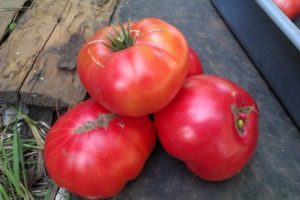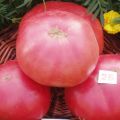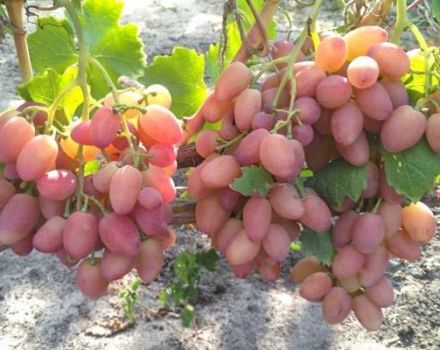Characteristics and description of the tomato variety Pink souvenir, its yield
Tomato Pink souvenir is one of the most successful and delicious among tomato varieties. A modern man cannot imagine his diet without such a vegetable as a tomato: various sauces, ketchups, dressings for the first and second courses. Tomato juice has a rich composition of trace elements and useful properties.
Tomatoes came to Russia during the reign of Catherine II and won love thanks to the efforts of the Russian breeder A. N. Bolotov. Only by the middle of the 19th century, this product began to be widely grown and in demand.
Benefits of growing pink fruits
Most consumers are familiar with the flavor of tomatoes. The pink fruit has a sweeter, richer flavor and is suitable for both fresh consumption and preservation. The first varieties of pink tomatoes bred were less productive and required very careful care, but at the moment a large number of varieties have been bred that have good yields. Pink tomatoes require attention as well as red ones.
Breeders of the Volgograd, Samara regions and Krasnodar Territory made a significant contribution to the development of new varieties. Among the advantages of pink tomatoes, it is worth noting the presentation and taste, which is important when growing vegetables for sale.
Main characteristics of the variety
In the wide variety of pink tomato species, the Pink Memento stands out. Consider a detailed description of the variety:
- Early ripe - about 80 days from seed germination to the appearance of fruits and the beginning of ripening.
- Determinant - as a rule, undersized (up to 60 cm), stops growing after the appearance of several ovaries (4 - 5 pcs.).
- Multiple - has up to 7 fruits in each inflorescence.
- Cold-resistant - tolerates low temperatures well in autumn and spring.
- Heat-resistant - tolerates temperatures above 30 ° C.
- Formation of the first inflorescence above the 6th leaf, then after 1 - 2 leaves.
- It has medium-sized leaves of light green color.
- Productivity - 8 kg and more from 1 m2 (with the right approach to care).
Fruit
Characteristics of the fruits of this variety:
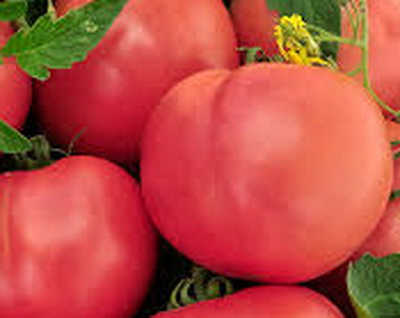
- rounded shape;
- dense pulp and skin;
- deep pink color with a pearlescent tint;
- sugar, fleshy consistency;
- weight about 100 g (+ -20 g).
Gardeners give positive feedback to this variety of pink tomatoes. To grow tomatoes, follow the rules below.
Landing
Tomatoes are sown for seedlings in March, after the 20th. Tomatoes can be planted in the garden under the film or at home, in boxes and pots.
It is advisable to use disinfected clean soil with peat or other fertilizer. Seeds can be disinfected with a solution of potassium permanganate (1 g per 0.5 l of water). If desired, soak for 2 - 3 days for faster emergence.
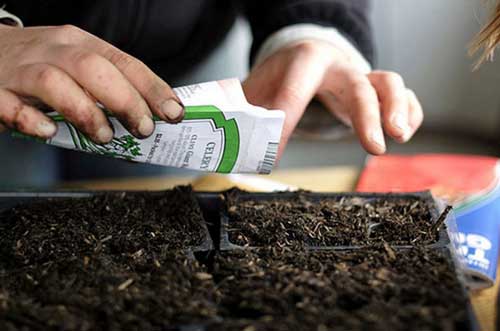
The seeds are planted to a depth of 2 to 2.5 cm. The temperature should be at least 15 ° C. The seeds should germinate after a week. From this moment on, it is necessary to maintain a temperature of 18 - 20 ° C and high humidity. After the appearance of 2 true leaves, it is necessary to make a pick (transplant into large containers for good development of the root system). A few days before transplanting into the ground, it is advisable to slightly reduce watering for good adaptation to new growth conditions.
Transplanting
At the end of May, when the air temperature reaches 12-15 ° C and above, you need to transplant seedlings into open ground. Seedlings can be planted under the film in mid-May. Neutral soil is suitable for planting. When fertilizing the soil with cow dung, the soil pH level remains more neutral. The soil should not have groundwater, otherwise fungal diseases may appear.
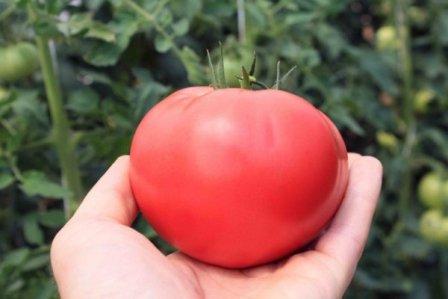
Since pink souvenir tomatoes are a low-growing variety, seedlings can be planted to a depth of about 20 cm, and the distance between seedlings should be at least 35 cm. A healthy bush should have 8 leaves and a not very thin trunk (0.8 - 1 cm).
Culture care
Growing a variety will take time to groom. To achieve sufficient growth and good fruiting, the soil must be constantly loosened, fed with mineral fertilizers and watered.
Watering
Every person who has planted pink tomatoes more than once knows that it is necessary to adhere to certain watering rules:
- After planting, the first watering must be ensured after a few (5 - 7) days, allowing the root system of the seedlings to grow.
- For the next 2 to 3 weeks, do not over-water.
- Before setting the fruits, it is necessary to observe the watering regime - no more than 1 time per week, in order to avoid the formation of fungi and strong growth of green mass.
- At the stage of fruit growth, the number of watering should be increased up to 2 - 3 times a week.
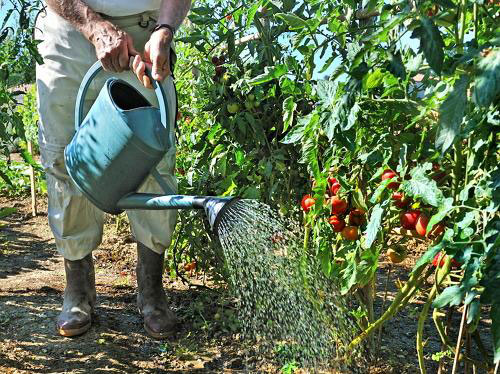
The amount of moisture required for pink tomatoes depends on the region of planting. In arid regions, crops require more frequent watering, in temperate regions, less water.
Disease prevention and pest control
Like any plant, pink tomatoes are susceptible to disease. Consider a description of common infections:
| Name | Signs | Control methods |
| Late blight | A fungus that stains part of the fruit dark brown and gradually absorbs the entire fruit. On the leaves of the lower tier, spots with white spores appear, on the stems there are stripes. During the rains, they rot, and in drought they dry up. All nightshade crops are affected. | For prevention, you need to treat with 10% saline and a solution of copper-containing preparations (phytosporin, trichodermin, Ordan). Do not plant tomatoes close to potatoes (at least 5 m) and other nightshades. |
| Streak | The causative agent is the tobacco mosaic virus (BTM) together with the potato virus. On the stems, stalks and other parts of the bush, red-brown stripes appear. Outwardly, it is similar to late blight, but the bush does not rot. The culture dries up. Passed through seeds to the next harvest, stored in the ground. | The best prevention method is to soak the seeds (30 - 60 minutes) before planting in 1% potassium permanganate (10 g per 1 liter of water) or in 1% nitrate solution. Good lighting, spraying with salt solution and copper sulfate. Avoiding sudden temperature changes. |
| Gray rot | Fungal disease provoked by Botrytis cinerea Pers. It affects the stem of a tomato if it is damaged, fruits, leaves. White spots appear on the parts of the stem and inside, in the place of which a gray fungus appears within several days. The leaves above the affected area turn yellow, the upper part of the plant withers. The disease develops during the formation of fruits. | Diseased plants must be destroyed, as the fungus is transmitted from bush to bush. Avoid excess moisture. |
| White rot | The causative agent is the fungus Sclerotinia sclerotiorum. It affects already ripe fruits (white bloom in the cracks) during storage. The source is the soil. | Treatment of bushes with phytosporin. |
| Brown rot (phomosis) | A common disease. It originates from the stalk, the fruits are covered with small brown spots and gradually rot completely. | Avoid fertilizing with fresh manure. |
| Spider mite | Drying and falling of tomato leaves. | Destruction of nearby weeds, digging, treatment of the bush with chemical solutions, for example, Fitoverm. |
Top dressing
If the soil for pink tomatoes has been fertilized since autumn, then the tomatoes can be left without further feeding. If there are not enough minerals in the soil, fertilization will be required. The best are cow dung, chicken dung, horse dung, and organic humus.
For feeding, a solution is prepared - for 10 liters of water 1 kg of any of the listed organics. The solution is poured into the root of the plant in the amount of 1.5 - 2 liters. If possible, fertilize 2-3 times before harvest.
